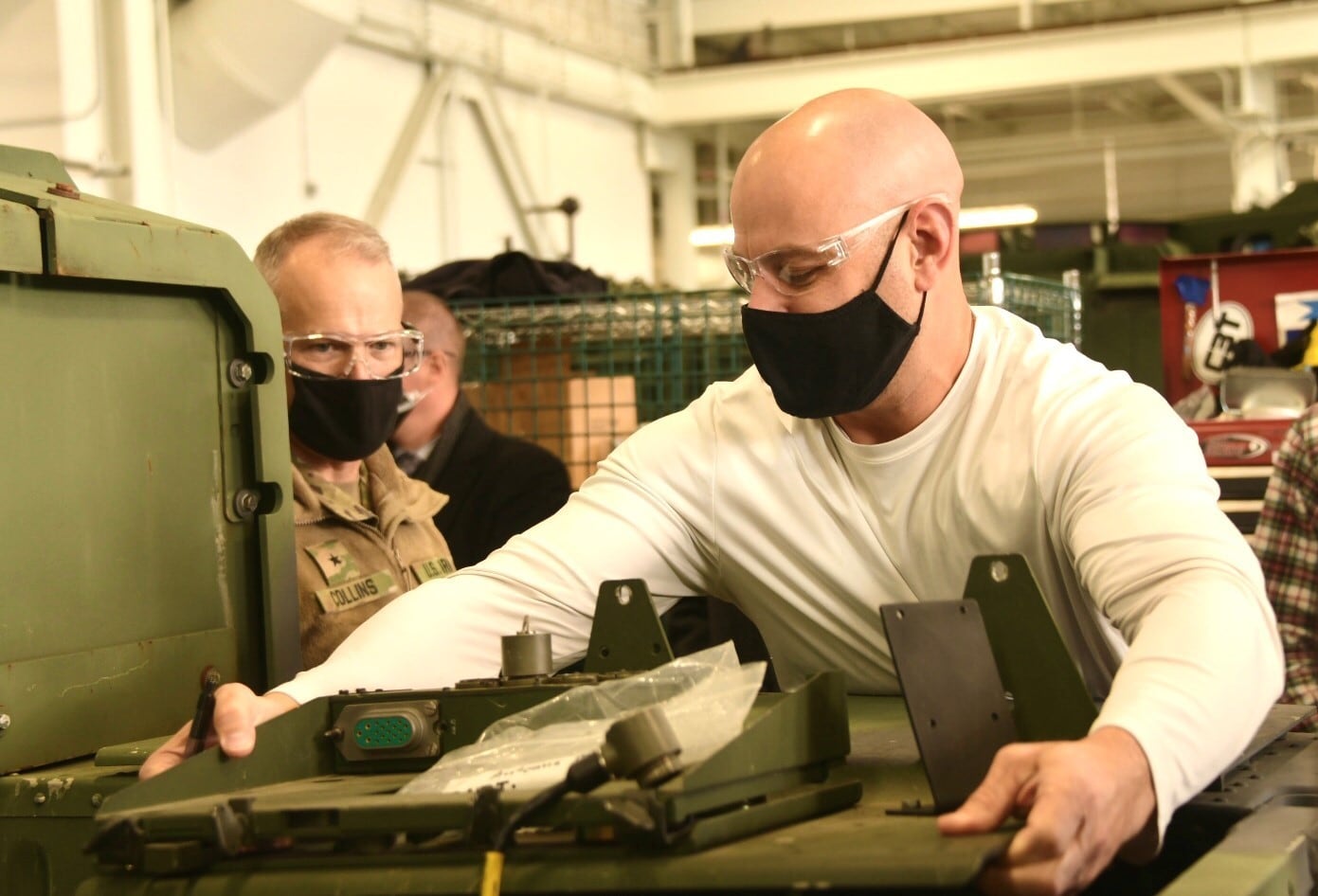BELCAMP, Md. — The coming months will be busy for the U.S. Army’s network modernization office, as it advances a handful of so-called capability sets meant to revamp battlefield communications.
“As we enter into this fiscal year, it’s probably one of the few times that we’ve had four capability sets kind of going on in parallel,” Program Executive Officer for Command, Control and Communications-Tactical Army Maj. Gen. Robert Collins said at an event March 10.
The first capability set — compounding technological improvements implemented every two years — is already about 50% fielded, and will only progress from there, according to Collins.
“That’s everything from kit that goes down to the brigade combat teams that we’ve done there,” the major general said. “And that does include capability we put out to the 82nd Airborne, that did deploy.”
Capability Set ‘21 focused on infantry brigades, making the network more intuitive and making communications gear smaller, lighter and faster.
A critical design review for Capability Set ‘23, with an eye on Strykers and boosted bandwidth, is planned for April. The upcoming evaluation will really get the ball rolling on procurement — “lock the design and move into the production phase,” said Collins.
“For Capability Set ‘23, we’ve been doing a lot of experimentation and prototyping as we get ready,” he said. “We had the preliminary design we did last year, we’ve got our critical design that’s coming up.”
Beyond that, a technical meeting for Capability Sets ‘25 and ‘27 is planned May 9-10. The Program Executive Office for Command, Control and Communications-Tactical announced the meeting on social media March 8, billing it as a means to help industry shape its research-and-development efforts.
“User experiences and current operational environments have shown that capability set efforts should be transport agnostic, data centric and offer security architecture approaches and standards to provide interoperability, data accessibility and identity management,” reads a public notice for the future get-together in Philadelphia. “As the Army shifts to a division-centric unit of action environment, capability sets will take into account data and connectivity needs at division level and supporting elements.”
Collins in 2020 told C4ISRNET that dialogue with industry and other partners is critical to getting things right.
“The other thing I’ll underscore is we do this with continuous industry feedback and involvement,” he said at the time. “And when I say industry, I’m talking more than just your traditional, your nontraditional. And so we do a continuous outreach with industry, and I’m very proud of that.”
Capability Set ‘25 will build on the two before it and will focus on automation and network protection. By Capability Set ‘27, documents show, the Army’s insertion of commercial capabilities will be “fully institutionalized,” enabling more-secure wireless connectivity, significant cyber improvements and better use of artificial intelligence.
“On the far righthand side, when we start talking about Capability Set ‘25, we start looking at how do we go from dismounted to mounted?” Collins said March 10. “How do we how do we start to go at echelon?”
Colin Demarest was a reporter at C4ISRNET, where he covered military networks, cyber and IT. Colin had previously covered the Department of Energy and its National Nuclear Security Administration — namely Cold War cleanup and nuclear weapons development — for a daily newspaper in South Carolina. Colin is also an award-winning photographer.








